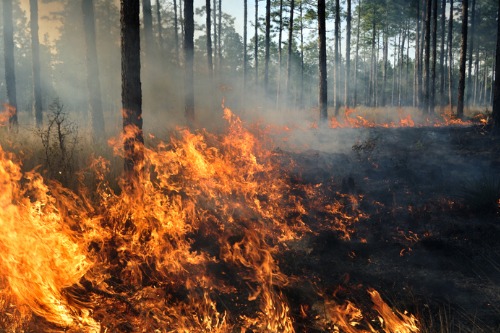

When it comes to wildfire and bushfire, it’s important not to give into a fatalistic view that there’s nothing we can do about it. That’s simply not the case. In fact, there’s growing evidence in fire-impacted zones around the world that there are specific things we can do to protect individual communities, even if they’re buried deep in the middle of the wildland-urban interface (WUI).
There are three main mechanisms through which wildfire or bushfire can damage individual buildings. The first and most obvious mechanism is when flames actually touch a building and set it on fire. The second is when flames in close proximity to a building heat it up to the point where it becomes more susceptible to ignition. The third is what’s called an ember storm – when firebrands or burning embers land on or near the building and then set it on fire.
“That third mechanism – the firebrands and burning embers – is responsible for about 90% of all losses associated with individual buildings,” said Michael Young, vice president, model product management, at Risk Management Solutions (RMS). “If you find ways of protecting the building from burning embers, then what you’ve done is you’ve actually mitigated the individual risk on a property-by-property basis.”
There are very specific actions that can be taken to protect buildings from ember storms. These actions are all encapsulated in programs like Firewise USA, FireSmart Canada, and Safer Together in Australia (to name but a few around the world). These programs all take a multi-stakeholder approach towards more holistic risk mitigation and wildfire management.
“If you look at all those programs, one thing they advocate is making sure that the elements you put on a building, the components like the roofing and the siding, are not combustible materials,” Young commented. “Get rid of the wood shake roofs in the middle of the forest, or the wood panels on the side of the building. Instead, replace it with something that is non-combustible, like cement boards and tile roofs. Even asphalt roofs are more resilient than a wood shake roof. It’s about changing the way you build buildings to make them more resilient.”
Another critical aspect for homeowners and business owners to focus on is the immediate surroundings of a building, especially if they’re in a WUI or a high-risk fire zone. The most critical zone is the zero- to five-foot zone, which should be cleared of all burnable material, including mulch and vegetation that is directly adjacent to the building.
“If people clear that zero- to five-foot zone, they can increase the possibility of their building surviving a WUI fire that comes through a neighborhood,” Young told Insurance Business. “The next zone is the zero- to 10-meter zone, which is a defensible space zone. There you’re trying to replace extremely dry vegetation with certain types of highly irrigated vegetation. You also want to remove all kinds of burnable elements so that they don’t become their own source of embers that can attack the individual building.”
According to Young, and many other wildfire specialists around the world, wildfire is a peril that can be managed on a location-by-location, and a property-by-property basis. Young stressed: “You want to avoid a Chicken Little-type scenario where everyone says: ‘Run and hide!’ This is a peril that can be proactively managed up-front.”
